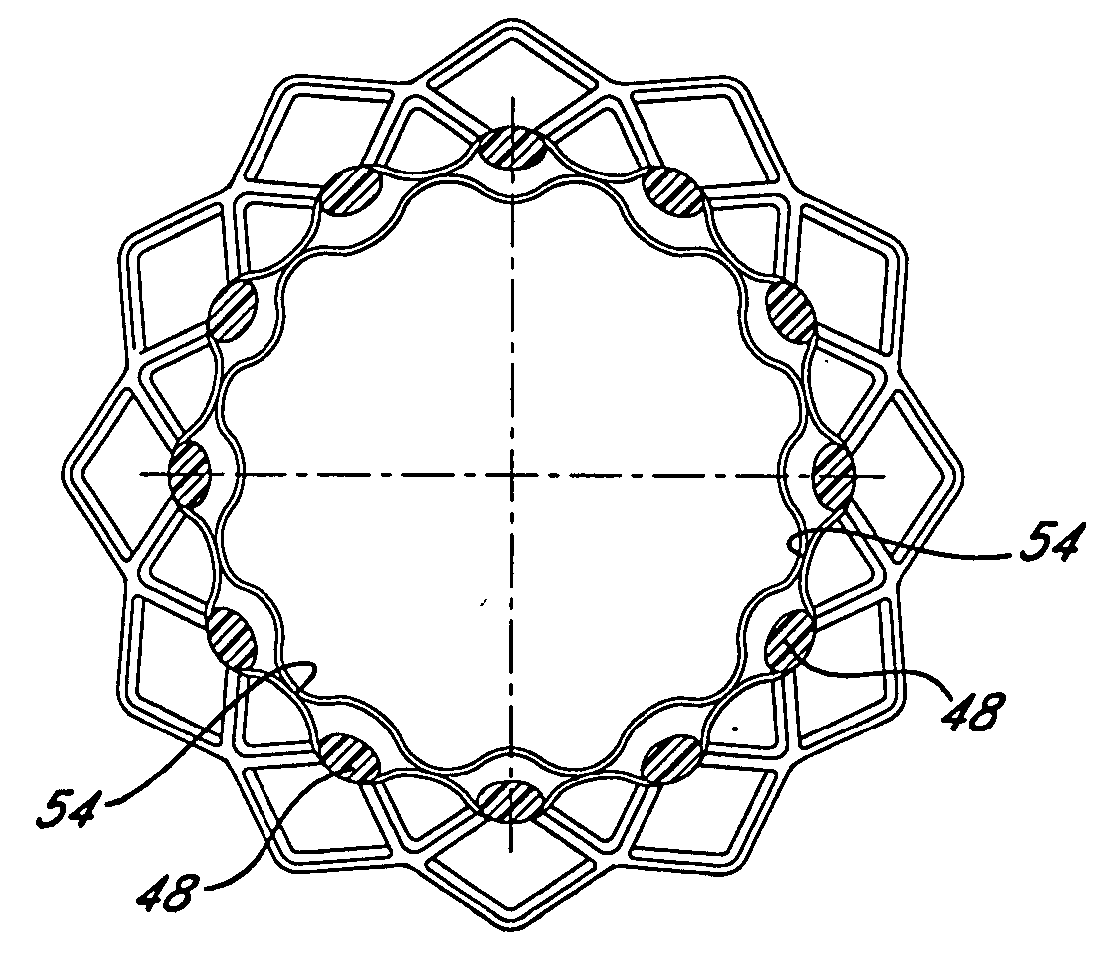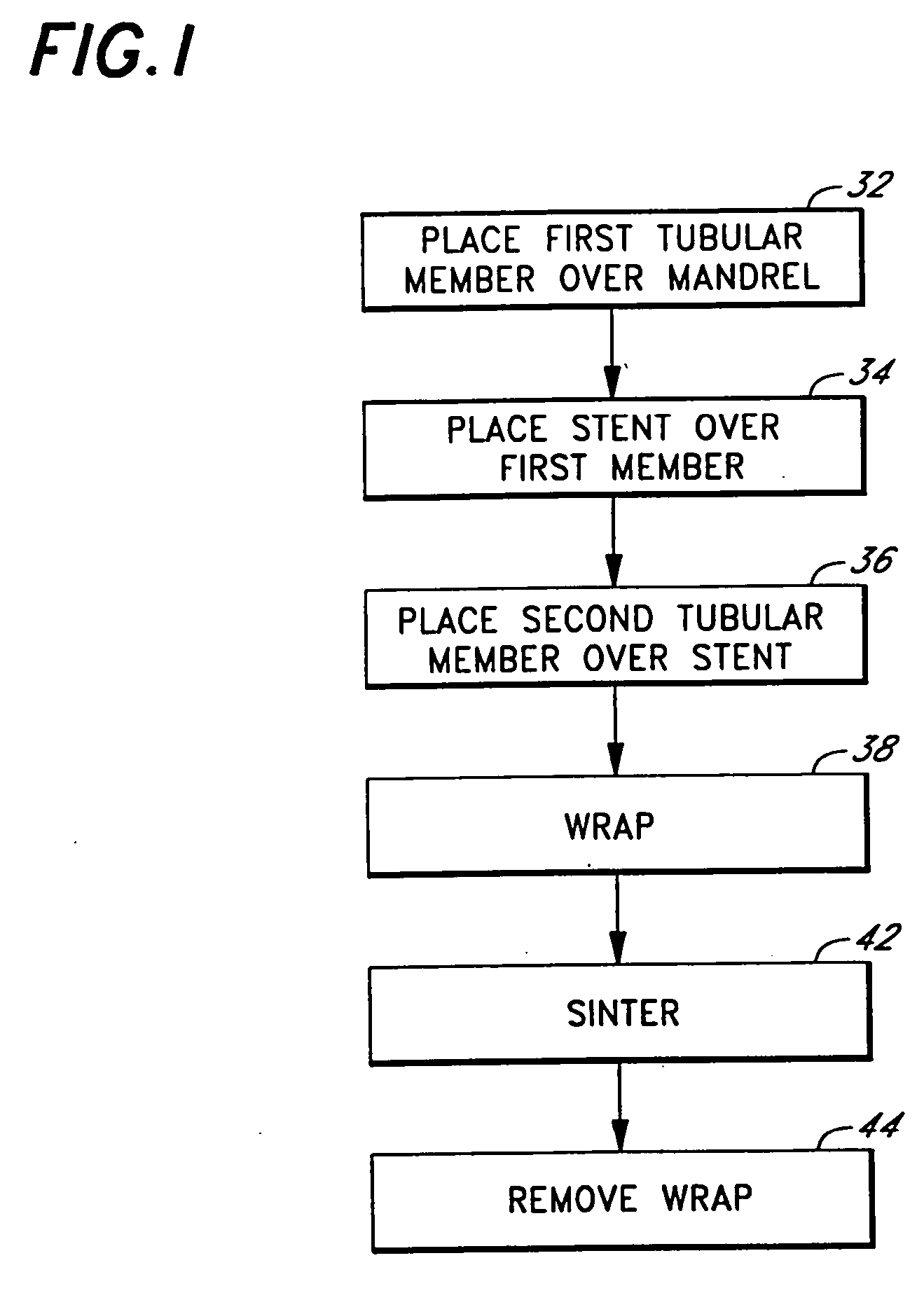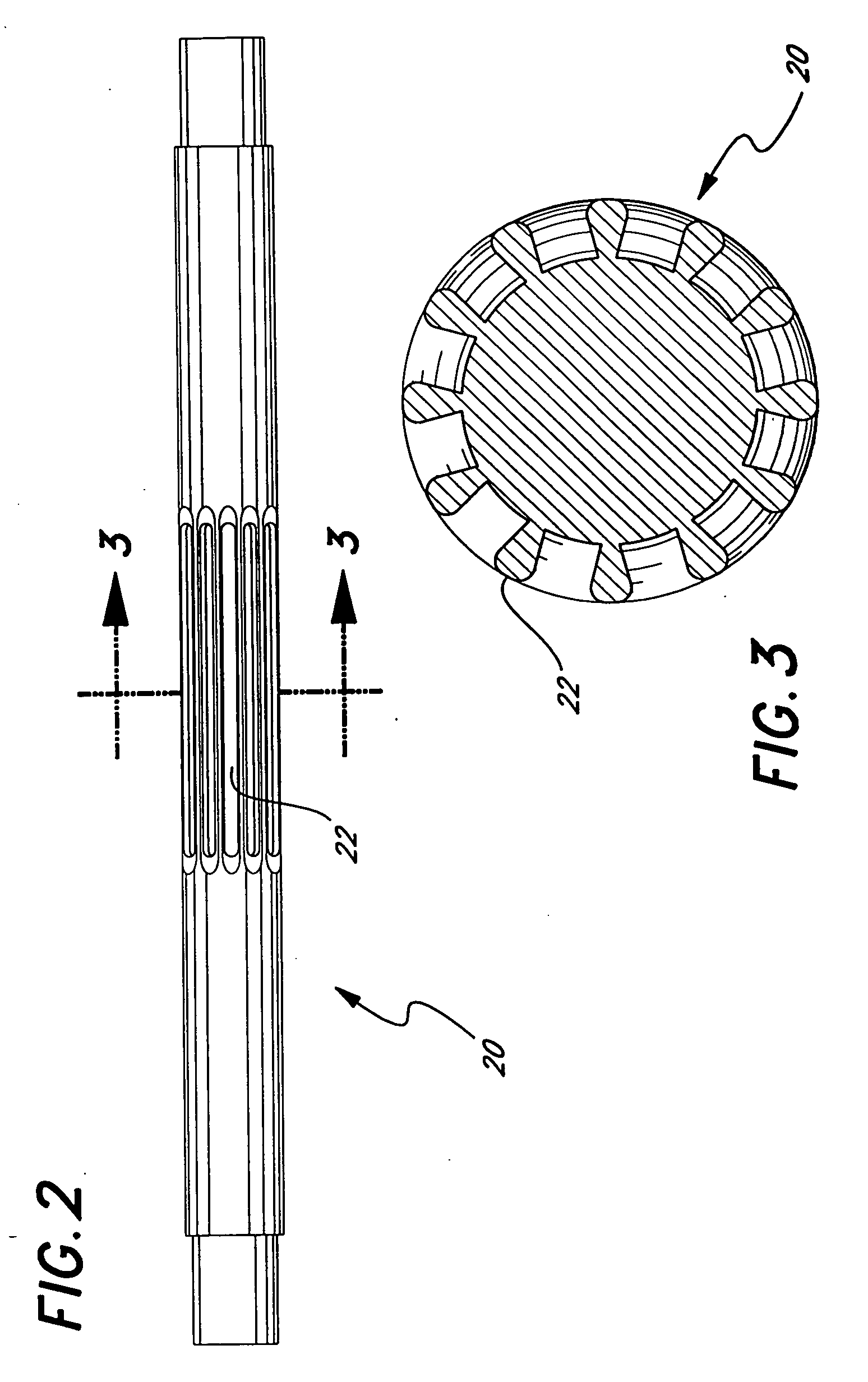Selective adherence of stent-graft coverings
a stent and graft technology, applied in the field of implantable vascular grafts, can solve the problems of lack of other desirable features, lack of additional means, and some subsequent retraction, and achieve the effect of preventing restenosis or local thrombosis
- Summary
- Abstract
- Description
- Claims
- Application Information
AI Technical Summary
Benefits of technology
Problems solved by technology
Method used
Image
Examples
Embodiment Construction
in conjunction with the accompanying drawings that are first briefly described.
BRIEF DESCRIPTION OF THE DRAWINGS
[0044]FIG. 1 is a is a process flow diagram illustrating a preferred method of making a stent-graft device
[0045]FIG. 2 is a is a perspective view of a mandrel having longitudinal ridges or splines.
[0046]FIG. 3 is a is a cross-section view of the mandrel shown in FIG. 2.
[0047]FIG. 4 is a perspective view of a stent-graft device illustrating selected regions of bonding between the luminal and abluminal stent covers and a plurality of slip plane pockets intermediate the luminal and abluminal stent covers.
[0048]FIG. 5 is a is a cross-sectional view taken along line 5-5 of FIG. 4.
[0049]FIG. 6 is a scanning electron micrograph illustrating a selectively bonded region and a slip plane pocket with a stent element residing therein.
[0050]FIG. 7 is a is a perspective view of a mandrel having circumferential ridges (as opposed to longitudinal splines).
[0051]FIG. 8 is a is a fl...
PUM
| Property | Measurement | Unit |
|---|---|---|
| temperature | aaaaa | aaaaa |
| diameter | aaaaa | aaaaa |
| length | aaaaa | aaaaa |
Abstract
Description
Claims
Application Information
 Login to View More
Login to View More - R&D
- Intellectual Property
- Life Sciences
- Materials
- Tech Scout
- Unparalleled Data Quality
- Higher Quality Content
- 60% Fewer Hallucinations
Browse by: Latest US Patents, China's latest patents, Technical Efficacy Thesaurus, Application Domain, Technology Topic, Popular Technical Reports.
© 2025 PatSnap. All rights reserved.Legal|Privacy policy|Modern Slavery Act Transparency Statement|Sitemap|About US| Contact US: help@patsnap.com



